Way Before the Hurricane, Chrysler Australia Flexed Hemi Six Muscle
The Dodge Charger is going electric, a move we all knew was bound to be controversial. What seemed like a big win, however—that the new Charger will keep internal-combustion power—is also getting a dose of pushback. A quick survey of comments on Dodge’s social media channels demonstrates that the “Brotherhood of Muscle” fanbase is riled up even by the Charger Sixpack due in 2025, which replaces the beloved Hemi V-8 with Stellantis’ new twin-turbocharged Hurricane inline-six.
“NO V8? NO MUSCLE,” read one reply. “6-cylinder?! 💀,” chuckled another.
One response accused Dodge of regurgitating an apparently hallowed term: “Six-Pack is a legendary name, and you ruin it with a 6-cylinder?!
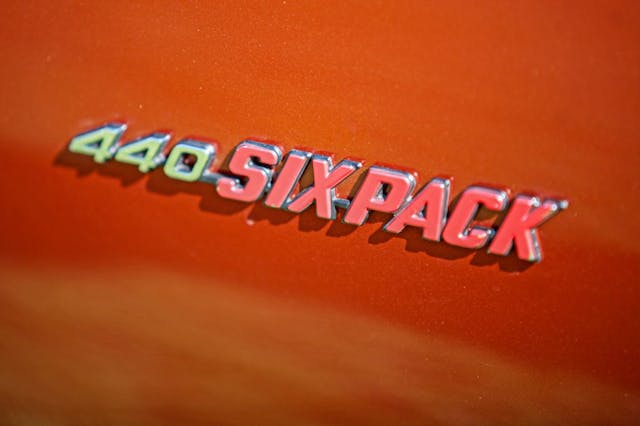
Look, we get it. After years of living with the “Gen III” Hemi V-8 and witnessing the halcyon days of the Hellcat, it’s more difficult than ever to accept any sort of replacement for displacement, no matter how power-dense the 550-hp high-output Hurricane promises to be in this new muscle car.
But to suggest an inline-six has no place in a Mopar muscle car and can’t wear the Six-Pack (or as Dodge now formats it, SIXPACK) name? Well, Mopar lovers from Down Under might disagree with those particular points.
Birth of the Hemi Six
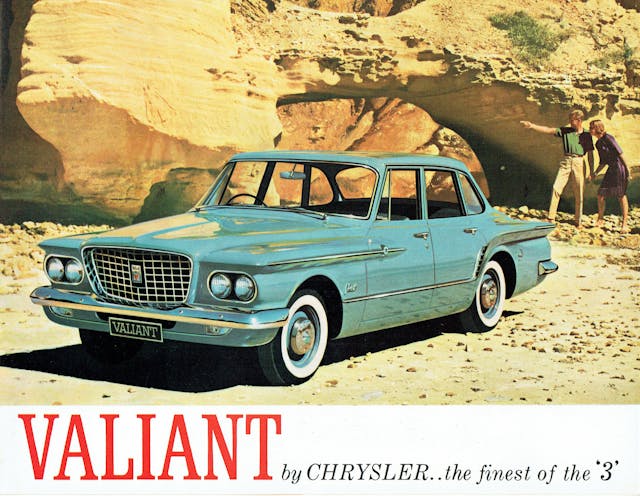
Let’s spin the globe and flip the calendar back to 1962. Two years after launching its compact A-body Valiant Stateside, Chrysler began exporting the Valiant to Australia. The move was a direct response to Ford, which took such steps with its Falcon in 1960. Initial imports were essentially knocked-down kits manufactured in the U.S. and re-assembled in a suburb of Adelaide.
That quickly changed. By mid-1963, the AP5-series Valiant became the first Australian Valiant completely manufactured within that country and, more importantly, the first not to mimic its American sibling. Instead, Chrysler’s Australian designers and engineers collaborated with their counterparts back in Highland Park to create A-bodies tailored for their own market. (My personal favorite: the later AP6 Valiant, which grafted the original Plymouth Barracuda’s unique front clip onto sedans, station wagons, and “utes” alike.)
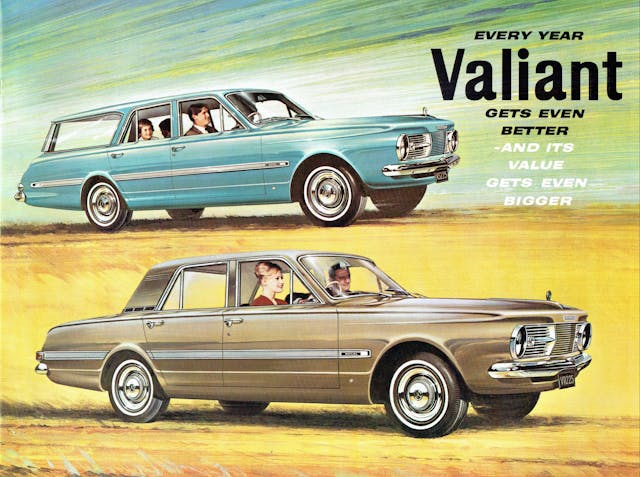
Like many American-market Valiants and Darts, early Australian Valiants relied largely upon Chrysler’s venerable Slant-Six for propulsion. That began to change with the VG Valiant in 1970. Alongside the familiar 225 cubic-inch Slant-Six and the optional 273 cubic-inch V-8 was suddenly a… Hemi?
No, not that Hemi, and some argue it’s a true Hemi at all. We’re talking about what was then an all-new line of overhead-valve inline-six engines that was developed, in large part and with a dose of irony from today’s perspective, by Chrysler’s American engineering staff. The hope was that the new six could serve double duty as a new pickup truck engine. However, these new blocks were no longer canted like the prior Slant-Six and, despite being cast iron, benefitted from a relatively lightweight design.
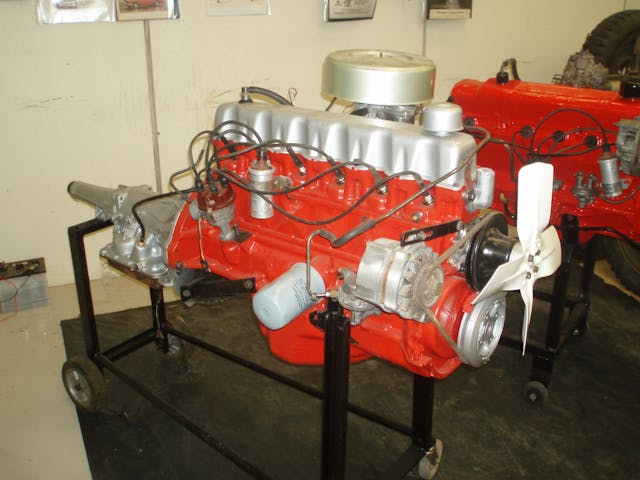
Compared to the Slant-Six, these new OHV sixes sported a larger bore, shorter stroke, higher compression ratio, and seven main bearings instead of four.
As for the cylinder head, well, calling this a Hemi (or comparing its cylinder heads to the 426 Hemi) was a bit of a stretch; the six had a non-crossflow design with valves sitting at an 18-degree angle from one another, forming only semi-hemispherical combustion chambers. Regardless, the specs satiated whatever standards Chrysler’s marketing team held at the time, and brochures and advertising heralding the arrival of the “Hemi Six” were executed in full swing.
Flavors of Hemi Six
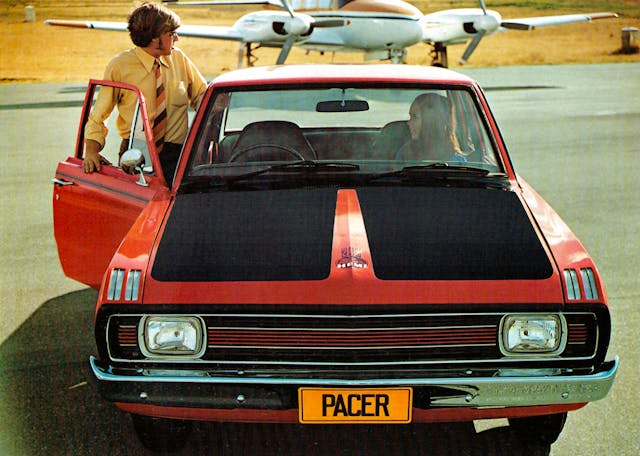
The new Hemi Six was initially available only in 245 cubic-inch displacement, but with varying intake, exhaust, and camshaft profiles to switch things up between trim levels. In base form, with a single-barrel carburetor, the 245 was rated at 165 hp and 235 lb-ft—a marked improvement over that year’s 145-hp 225 Slant Six (which continued to be sold as a thrifty option). The hottest variant appeared in the sporty Valiant Pacer, where it gained a two-barrel carb, split exhaust manifold, hotter cam, and a less restrictive air intake. Chrysler never published a rating for Pacer-spec 245s in its sales literature, but output was believed to be between 185 and 218 hp.
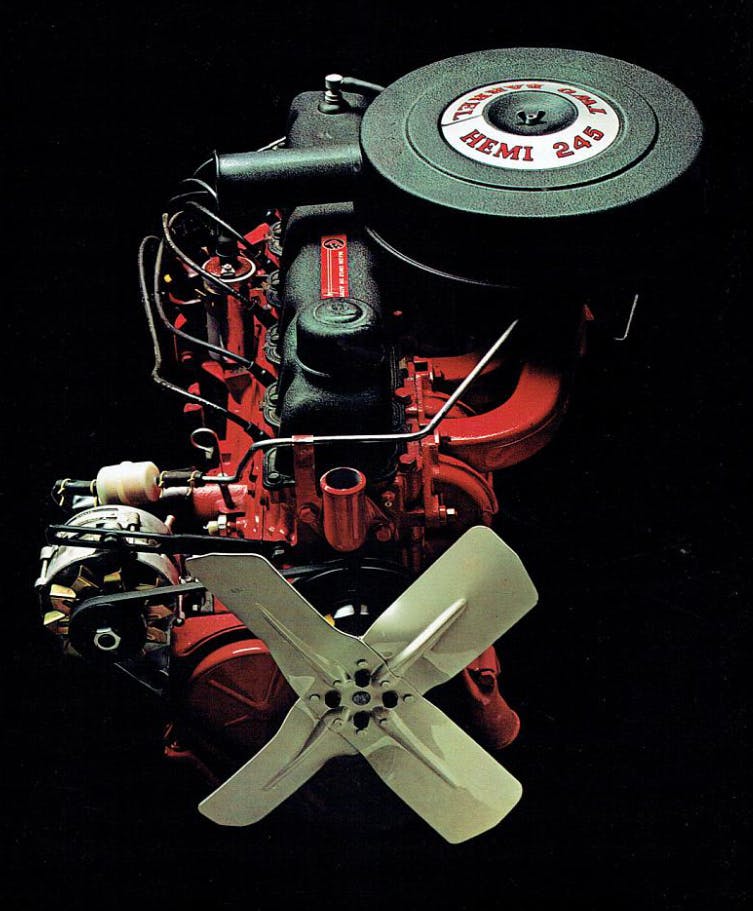

The Hemi Six range grew in 1971 to include a new efficiency-minded 215 cubic-inch model (which effectively replaced the last remaining Slant Six option in Australia) and a bored-out 265 cubic-inch model, which used pistons cribbed from the LA-series 318 V-8. Even with a one-barrel carb, the 265 produced around 205 hp and 273 lb-ft of torque.
1971’s VH-series Valiant also introduced the Valiant Charger, a two-door semi-fastback coupe with more than a few styling cues inspired by the American Dodge of the same name. The top-tier R/T model picked up where the Pacer left off, boasting loud graphics and, thankfully, requisite power to back up those looks.
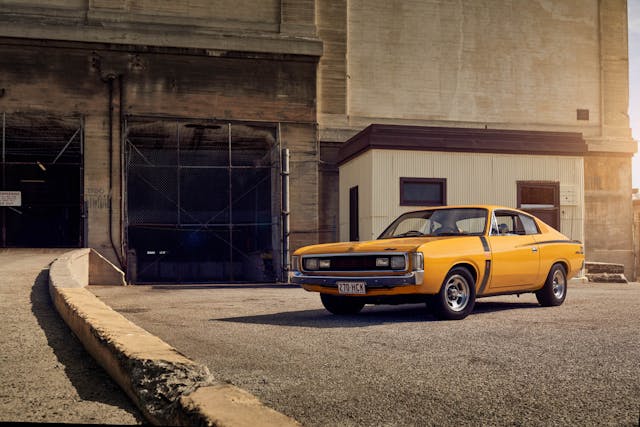
Six Pack with an Italian Twist
A 218-hp version of the 265 was standard fare on Charger R/T models, but that wasn’t what captured headlines. It so happens engineers were working in Italy with the fueling wizards at Weber to develop a “Six Pack” of their own, this time using three 45 DCOE two-barrel carb intake manifold to support three 45 DCOE side-draft dual-throat carbs. Buyers who ticked the E37 option box for their Charger R/T got a 265 with that spicy setup, helping bump output to 248 hp and 305 lb-ft of torque. Ticking the E38 option box for the R/T Six Pack yielded a unique cam profile and increased compression ratio, bringing power up to 280 hp and 310 lb-ft.
Not only were these Aussie Hemi Six Pack power numbers within spitting distance of many small-block V-8s of the era, but so were its on-track performances. Stock E38-spec Chargers reportedly made quarter-mile passes in the neighborhood of 14.4-14.8-seconds; that’s pretty close to the 14.3 and 14.4 numbers posted by both Hot Rod and Car and Driver, respectively, when evaluating a 1968 Dart GTS with a 340 V-8 underhood.
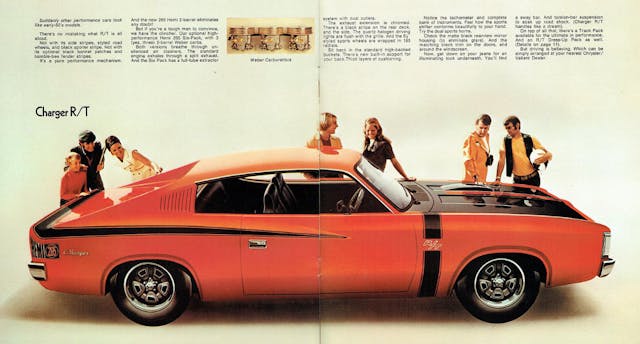
Things grew wilder yet in 1972. Not only was a four-speed manual transmission finally available in Australia, but the Charger R/T could be ordered with the race-ready E49 package. Here, the 265 Six Pack saw its compression bumped again to 10:1, and power grew to 302 hp and 320 lb-ft of torque. The extra power and additional gearing helped E49 Chargers move; period road tests cited a 0-60 time of 6.1 seconds and a quarter mile ET of 14.4.
The E49 package disappeared from the Charger lineup as quickly as it did down the quarter mile, with only 150-200 examples built in 1972, its single model year in production. The 1973 VJ Charger R/T still offered a 280-hp Hemi 265 with the Six Pack, but the Weber-in-triplicate option lasted only another year before it too was nixed. Chargers continued offering less exotic versions of the 265 until Charger production wrapped up in 1978.
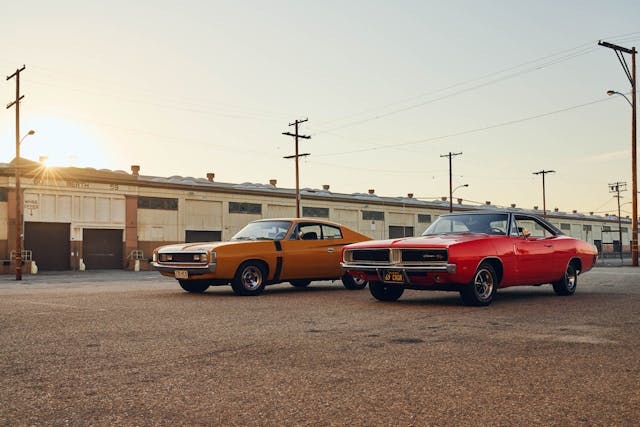
Hemi Six, We Won’t Forget Ye
Hemi Sixes wound up beneath the hoods of many Australian Chrysler offerings, including the plush but redundantly-named “Chrysler by Chrysler,” and the short-lived Centura—an unusual twist on the French-built Chrysler 180. In later years the engine gained electronic ignition systems, and even Chrysler’s Lean Burn carburetors, before Hemi Six and Valiant production ground to a halt in 1980, along with the entirety of Chrysler’s Australian operations.
So there. The Hemi Six may not have offered quite the same brawn and braggadocio as the almighty 426, but it still had Mopar muscle – just flexed in a different way.
***
Check out the Hagerty Media homepage so you don’t miss a single story, or better yet, bookmark it. To get our best stories delivered right to your inbox, subscribe to our newsletters.
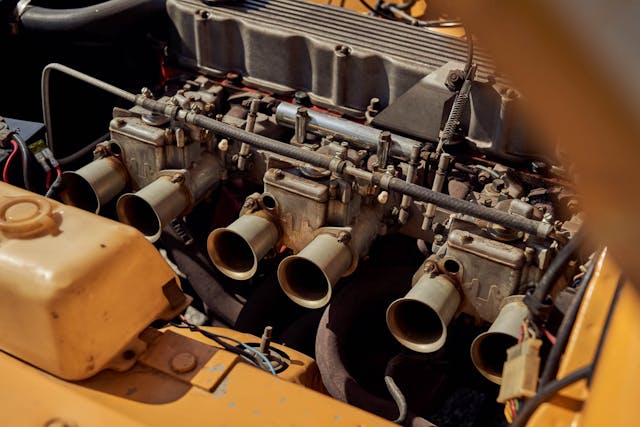


300 HP out of a 6 cyl in the 70s… not too shabby
Australia aside, using the six pak monicker on a battery powered motor makes as much sense as Ford calling theirs a Mustang Mach-E. Simply nothing more than word reuse and no link to the real heritage.
The six pack moniker is being used this time around for the twin turbo inline six motor. Aka the “hurricane.” It’s the Daytona that is an EV.
The correct moniker would be “FIAT”.
…..but…..you get to pronounce it ‘Muckey’……..
My valiants in the shed now, was running a 4 barrell Holley on a 265, had a non baffled exhaust at one point, man did it scream, nothing wrong with a 6 cyl
I have one of those rt e 38 chargers. The e 49 was the quickest car built in Australia for many years . Quicker than even the 351 gtho falcon. It was the quickest 6 for even longer until the xr6 turbo falcon with the barra motor
The last “hemi” wasn’t even a semi-hemi —looks like cashing in on the name was lifted from the Aussie 6.
V8 is great, mostly a marketing thing that has held since the 50s, but they are some of the best, simple, rugged designs that produced good power. They also got put in millions of things.
This new “Hurricane” 6 is making very respectable power and more than enough for anyone’s legal road use of a vehicle. I suspect they will push the Mopar speed parts upgrade path to at least show decent drag strip numbers and such and this engine will look better to the “brotherhood” once it is out there.
Inline 6 is a very stable design, which is why it was a standard for decades (and has remained so for many brands outside of American domestic). It also packages differently.
Look at it from an engine-swap perspective and the historical record that is hot-rodding:
-40s racers did whatever they could get their hands on, but gravitated to the Ford Flathead V8
-new OHV V8 quickly took over, Hot rod mag was full of Caddy, Olds, etc. swaps
-Zora outplays them all and the smallblock Chev V8 is the dominant swap engine for decades. Really helps that GM didn’t change many bolt patterns and such so there was so much interchange (or you needed 1 part from a speedshop) and GM transmission offerings satisfied most.
-LS engine family takes that crown, but we see more brand variety (Coyotes, Hemis) in modern hot rodding.
There is a lot of old cars a Hurricane 6 might fit very well into —will depend if that is easy enough to do.
Hopefully GM counters this with a re-envisioned Iron Duke 4 cylinder that goes faster than a Hellcat. That’d be fun.
Remember to credit Ed Cole for the Chevy small block. Zora tweaked Cole’s design.
^all good.
It was Zora’s play to sell “Corvette speed parts” through the dealerships that help cement the Chevy smallblock.
Personally I’d love to see the Hellcat V8 come back but with turbos instead of a supercharger. The inline 6 can be a great motor in the new car, there are plenty of inline 6’s who the aftermarket have boosted to crazy territory. But a V8 should still be around as an option.
Nothing wrong with an inline six. A few years ago, Ford Australia was selling one that put out 436 hp.
VG Pacers with the 245 had a 2BBL option and a 4BBL option. I believe 7 VG Valiants were sent to the Weber factory in Italy as mules to test the three carb setup. Sir Stirling Moss was the advertising face of the VG
Hi Paul,
I knew the late CAL engineer & Race manager who drove the blue VG Pacer to Weber Italy for development.
Interested where did you hear of 7 VG mules being sent?
I don’t think CAL had the budget to send more than 1 over & he never mentioned it.
Thanks JR
As good as the 6 cylinders are or have been, they aren’t V8’s. We will see how long they live for in time. Especially when used for long haul/towing duties in our wide brown land down under. I also think the buying public will answer the question with their $’s. Just as the have with the deletion of the diesel option in the Grand Cherokee. (Dropped like a hot potatoe by Caravaners since this move. It was hugely popular)
Ian, you do recognize that the dominant engine design in long-haul trucks and earth moving equipment is the I-6, right?
For more pedestrian uses, one has only to look to Toyota’s 2JZ for an example of how much power an I-6 can generate.
The other thing to keep in mind is that Turbo motors respond extremely well to “chip tuning” – either through an ECU swap or piggyback module – and can easily generate 15%+ more power in true plug-n-play fashion.
About in-line sixes and towing, Chrysler’s Cummins Turbo-Diesel engine seems to handle that pretty well and many long-haul truck engines share that configuration. What in-line sixes are not great for is high-revs, as the long crankshafts are whippy, and require seven main bearings, making them even longer. V8s package more easily while allowing for front crush zones. And, as far as the “hemi” moniker goes, there is nothing hemispherical about the combustion chambers in the current V8s marketed as Hemi®.
Or of the 6’s shown, none have a Hemi head design. The article was odd in its content.
In an era when young people refer to just about any car built before 1980 (and some after) as a ‘muscle car’ it does not surprise me that the car companies are recycling legendary fender badges and model names to bait and switch the uninitiated. Recently I overheard a kid at work refer to a photo I had of a ’76 Ford Granada (my Dad’s car way back) as a muscle car. I asked “how do you figure that?” He said it was from the 70s and had a V8. Duh! Sad times we live in when the very owners of these monograms (not the creators in Chrysler’s case) are slandering them to sell ugly cars.
All this talk about Mopar inline sixes, and not even a mention of the Hyper Pak option for the slant six in 1960. Yes, in 1960 you could get the dealer installed NASCAR upgrade version of the slant six. Carter 4-bbl, long ram intake, cam and springs, clutch, cast iron headers, and big exhaust.
It was the NASCAR homologation kit, for the short-lived “Compact car racing series” (Corvair, Falcon, Valiant) and it really hauls …
They’re great motors – an elegant design, amazingly compact for the displacement. Here’s mine in my ’77 Dodge truck – itself built by Chrysler Australia! https://photos.app.goo.gl/DP1AWCF5Sh2PPV85A